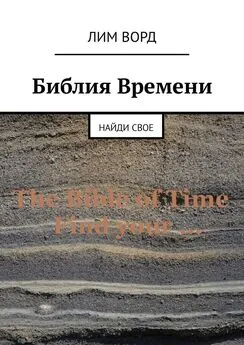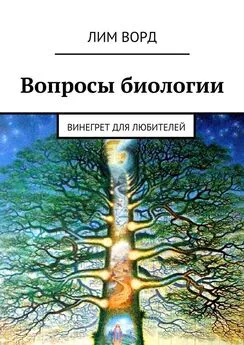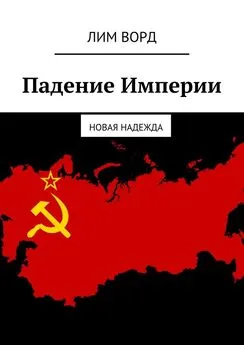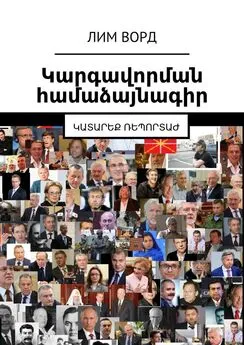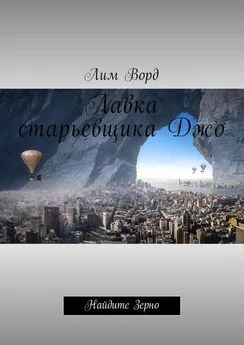Лим Ворд - Библия Времени. Найди свое
- Название:Библия Времени. Найди свое
- Автор:
- Жанр:
- Издательство:неизвестно
- Год:неизвестен
- ISBN:9785449318695
- Рейтинг:
- Избранное:Добавить в избранное
-
Отзывы:
-
Ваша оценка:
Лим Ворд - Библия Времени. Найди свое краткое содержание
Библия Времени. Найди свое - читать онлайн бесплатно ознакомительный отрывок
Интервал:
Закладка:
A consecrated, functioning temple, ideally – a place where the contradiction between the spiritual and the material is removed, the heaven descends to earth, God incarnates in the world. You can add that the difference between the temporary and the transcendent, the eternal, disappears, one can feel the infinity of taste, so that he begins to like it.
The sacraments of the Eucharist consist of a) proskomedia (Greek «offering»), when the priest, after reading the prayers for the sending of the Holy Spirit, in the presence of many believers, but also with the closed Royal Gates, prepares the Blood and the Body on the Throne. Wine is mixed with water and poured into the chalice. Prosfora is cut with a special copy – a ritual double-edged knife with a triangular blade. b) Liturgies of catechumens (taught in the faith, and also penitent and excommunicated). In the great litany (the Greek «extended prayer»), global (then first) global, then smaller, general church and social, then personal petitions are raised. c) Liturgy of the faithful (there are only persons who have accepted baptism). The prepared Holy Gifts are solemnly transferred from the altar to the throne through the North Gate: before the iconostasis, believers. After that, the Royal Gate closes, the altar curtain is pulled up. The remaining priests read the eucharistic prayer anaphora, after which the Woof (lifting upward) of the Holy Gifts takes place. At this moment, mysteriously, wine and bread are converted into the Blood and Body of Christ.
The priests take communion, then they receive the Holy Mysteries of Christ and the laity.
In the Roman rite the Eucharistic Liturgy is called the Mass (perhaps from the Roman missio – mission, message). There are no fundamental differences. The service is conducted in Latin.
2) The altar. A quadrangular table, hidden in the same «clothes» as the throne, to the left of the high place (the northern part of the temple). The location of the sacred vessels, as well as bread and wine – gifts of Christians, suitable for the celebration of the Eucharist. In the intervals between the services, the veil is closed.
The upper part is a part of the Orthodox church opposite the throne, near the central part of the eastern wall. In a small niche, on a certain elevation there is a pulpit (throne, a high altar) for the bishop. The throne is surrounded by a semi-circle of seats (synthron) of priests of lesser rank. In some parish churches, the place is designated more only by an icon lamp, or by a tall candlestick with candles.
3) Altar. The space between the semicircular (eastern) wall is an apse and the iconostasis.
4) Ponomar (northern), it is sometimes «paradise», because of the usual themes of the painting, the door in the iconostasis.
5) Sacristy (a storage room, a deacon). Place in the altar, several cabinets, or a separate room for storing the liturgical garb of priests and church utensils.
In the sacristy lead the southern, otherwise, the deacon’s doors of the iconostasis.
The spiritual person in charge of the sacristy is a sacristan. In Catholic churches, the sacristy is also called sacristy (Latin sacrum – sacred utensils). Mass begins with the solemn release of the clergy from sacristy. Here you can privately talk with a clergyman.
Ponomar – other Greek. παραμοναριος – «gatekeeper», he is an altar boy, sexton, a servant of the Orthodox Church, obliged to ring bells, sing in the choir (elevations on the sides of the salt), monitor the order, serve during worship.
Deacon – from other Greek. διάκονος is a minister, a person passing service at the first, inferior priesthood degree. Below him in the church hierarchy is only the clerk, the subdeacon is a cleric (he is a true believer, but not ordained as a parishioner). The deacon does not have the right to perform the sacraments himself. Appeal to the deacon in solemn cases, usual, but not registered in the church protocol of the ROC: «Your evangelism», «Your loud voice», or «Your God-love».
6) The iconostasis. In Orthodoxy – the altar partition, consisting of rows of icons, separating the temple (parishioners) from the altar, respectively, the priests, and the ritual of the priesthood. In the Western tradition, there is no such clear separation of the people from the hierarchs.
7) Clears (from other Greek κλῆρος – getting a place or land by lot). Elevation, sometimes partially enclosed, for singers or readers. Sometimes the choir of choristers is also called the «choir».
8) Salt (from the Latin solum – flat place, foundation). Raising the floor before the altar barrier or the iconostasis. In the front part of the saltwater there is the pulpit (another Greek ἄμβωνος – «ledge, elevation») with the chair (other Greek καθέδρα armchair, throne), a symbol of the authority of the bishop, or, in the Catholic and Protestant temples – sacred texts.
9) The middle part of the temple. A place for parishioners. In orthodox (orthodox) churches, the service is accepted standing, in Roman Catholic and Protestant – sitting on benches (sometimes, on the sign of the priest, rising).
10) The porch (from the Latin praetorium, place for the praetor tent, later – the central square of the city). Passage part of the temple, vestibule. In the pre-Niconian Orthodox Church, the vestibule is usually very capacious, designed for a joint meal, gathering people during any emergency, heating the wanderers during the cold season (days), etc.
11) Candle box, literally – a church shop. Theoretically, trade here does not happen, but donations are made to the temple. In theory, in case of extreme need, you can ask for a candle for free. Practically, (nowadays) trade in various goods (wine, candles, books), including quite secular calendars, pictures are kept in the middle part of the temple.
12) The porch (from the Latin atrium, ater – «smoked», «black», the room blackened by soot, or from the Latin pauper – «poor») – a roofed platform in front of the inner porch of the church, in which in the first centuries of Christianity stood weeping and penitent. The first temple elevation. Usually in the middle of the porch there was a pool in which believers washed their hands and face, before entering the church. The usual place for beggars, begging for parishioners.
8. Standard peasant hut (from the word «isba» – «source»). The usual «footage» – 25 square meters, in the absence of clearly defined rooms («studio»), is designed to accommodate seven or eight people.
In the pre-Christian era, before the building of the dwelling, the masters must sacrifice any animal, best of all – the horse; which thus gives the structure its reasonable, perfect form. An echo of the belief is the strengthening of the wooden horse’s head on the roof.
1) Furnace with a stove (polotyami). The base is 2 × 1.5 m., The height is about 1.5 m. Until the beginning of the 18th century, smoke is selected through the doors and windows in the walls («in black», in the so-called «hut»), then on a wooden box, … a pipe made of fireproof bricks. In the body of the furnace there are numerous excavations (stoves, grills) for cooking or drying clothes. There is also a tub with water and a towel for washing. On the floor, you can climb up two or three high steps – offensives. Cook, fry the dishes, bake bread at the mouth of the stove, in front of burning fuel, or a little further, in the furnace (furnace) of the melted or cooling furnace. The oven is usually melted once a day, in the morning, at the same time the food is cooked: some of it is kept warm (languishing) until lunch and dinner in the grooves. According to popular belief, the space under the stove, or behind it – is a legitimate habitat for a brownie.
2) Oven (baby’s corner, he’s a kut, tinyushka, sunshine). Located between the mouth of the furnace and the opposite wall. Sometimes it can be called a closet, although it is usually a room in the passage, for storing some things, or sleeping on warm days. It is covered with a curtain or a board, not reaching the ceiling, with a partition. Owning women and, above all, the eldest (by age) of them in the house.
3) The ship’s shop. Location of household utensils and blanks for cooking. Household items, tools, etc. are also located on shelves that run along the entire inner perimeter of the hut (except for the Red corner)
4) Holy (red, anterior, corny) corner. It is located diagonally from the stove, usually on the eastern side of the hut. In this version, the door, canopy and podklet are on the left (the rest changes almost nothing). An analogue of a church altar in a dwelling. In addition to the icons on the shelves of the Red Corner, there are: a vessel with consecrated water, candles, and branches of the Easter pussy willow. In the upper row there are, separated by curtains from benches, the icon of the Savior (center), to the left of the viewer – the Virgin, on the right – usually, Nikolai the Sinner. Old believers protect the faces of icons from prying eyes with white cloths, the so-called. evangelists. The composition of the other saints (personal icons) is selected at the discretion of family members. Outsiders enter the Red Corner, in the norm of generally accepted behavior, are free only at the special invitation of the hosts.
5) Conic. A wide bench, also a trunk with a folding flat lid. It is fenced off from the entrance door by a vertical board-back, usually made in the form of a horse head. For a woman sitting on a conic (man’s place), except for some special cases, is considered indecent. A place of honor for male guests.
6) Dining table. It is considered «the hand of God», which serves food, is located in the Red corner. The host man sits under the images, the eldest son on the right side, next on the left, and so on. Except in special cases, the food is served in a common (usually wooden) bowl. Eating takes place in deep silence. On holidays, a massive table (with the ability to slide on skids) is exposed in the middle of the hut. In the presence of a significant number of guests, women feast separately, in their own sun.
7) A long shop. A long bench running from the Red corner along the entire facade. By and large, it is considered a female place, prenaznachennymi for spinning fabrics, embroideries, etc.
8) Kutniy corner. The location of the tub with drinking water or kvass.
9) Primost. Wooden flooring for sleeping. It is usually supplemented by a second tier – poloty, essentially being a continuation of the furnace stoves. As a rule, the dwelling of children and single youth. The bed below is intended for the owners of the dwelling – husband and wife, their parents, or (in the cold season, when you can not spend the night in the hall or cage) of young couples. It is considered normal to sleep on straw mattresses, near a door or stove, without any flooring. In the summer time, you can relax on the bank – a log hut attached to the walls for a strong fortress and heat-saving, grass-covered pile of land.
10) Chest.
11) The canopy. A tambour, a cold storage room, a guest room in a warm period. Combined with short or long halls, living quarters, outbuildings, barns, etc., form the notorious mansions.
12) The cage. Pantry, summer home, bedroom. Pokljet – a cellar, a cellar, covers usually space and under the whole house. Over the cage can be arranged a room – an unheated living room with large windows on all sides, a sign of a rich house. Sometimes here there can be a stove, round or quadrangular, with tiles, following the Dutch pattern. Similar to the upper room of the light-tree – but it definitely does not have a furnace, at least its furnace part. Heating (to a small extent) is made by the oven side, or plastered chimney.
Читать дальшеИнтервал:
Закладка:
